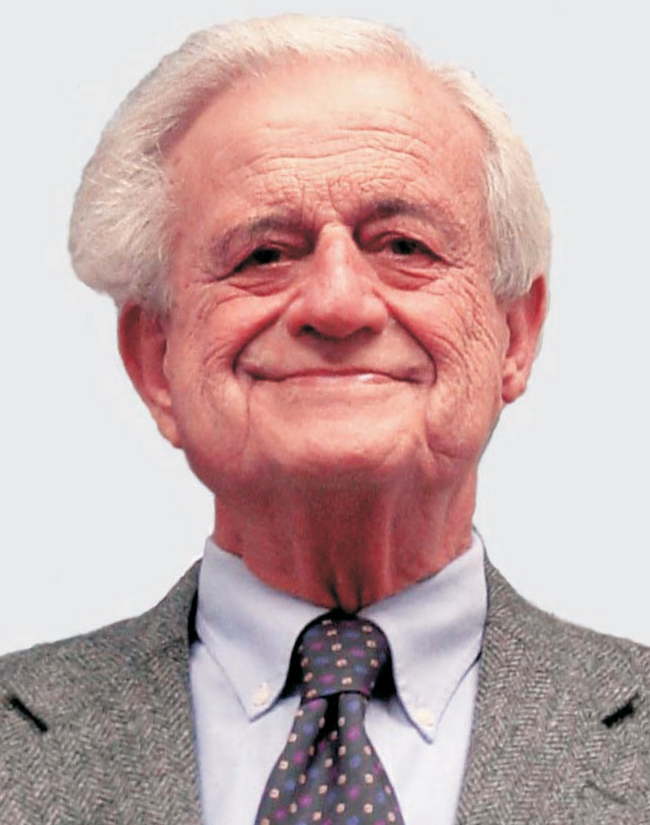Marshall Nicholas Rosenbluth
DOI: 10.1063/1.1839386
Marshall Nicholas Rosenbluth, a brilliant theoretician, died on 28 September 2003 in San Diego, California, after a two-year struggle with pancreatic cancer.
Born on 5 February 1927 in Albany, New York, Rosenbluth graduated from Stuyvesant High School in New York City and maintained an active interest in that institution throughout his life. He enlisted in the US Navy during World War II and graduated from Harvard College in 1946 with a bachelor’s degree in physics. Rosenbluth was a leading member of a remarkable group of physics graduate students at the University of Chicago during the postwar era. Four of those students eventually went on to win Nobel Prizes, and the group produced several directors of nationally renowned scientific institutions. In 1949, Rosenbluth earned his PhD in physics under the supervision of Edward Teller. His thesis was in elementary particle physics and dealt with meson interaction theory.
After playing a key role in national defense projects at Los Alamos (1950–56), Rosenbluth began his life-long concentration on plasma physics and controlled fusion the following year, when he joined the research staff of General Atomics in La Jolla, California. He would continue his connection to GA for the rest of his life. Rosenbluth held professorships at the University of California, San Diego (1960–67); the Institute for Advanced Study (1967–79); and the University of Texas at Austin (1980–87), where he was the founding director of the Institute for Fusion Studies. He returned to UCSD and GA in 1987, and remained active in both institutions until his death. He also was chief scientist (1993–98) of the joint central team for ITER, an international prototype fusion energy reactor.
Rosenbluth was unique in his tremendous strength, breadth, and depth in many areas of theoretical physics. His numerous major achievements included the development of the Monte Carlo Simulation technique, the defining calculation for the scattering of electrons off nucleons (the “Rosenbluth formula”), and the basic theory of the free electron laser. Rosenbluth left his mark on basic plasma physics, all aspects of magnetic confinement theory, inertial confinement, and laser-plasma interaction theory. He was particularly interested in the kinetic foundations and descriptions of macroscopic plasma dynamics.
He was both superbly insightful and a theoretical and calculational virtuoso, known for overnight delivery of key results, usually scribbled on the back of a piece of paper stained with tobacco from his ever-present pipe. He had an unusual knack for simple, elegant minimalistic solutions that cut directly to the heart of an issue. Though he generally avoided ponderous formalism, he readily developed new formalistic methods when the physics problem at hand required them. Rosenbluth was a prag-matic theorist, with a strong interest in and deep knowledge of experiments and was amazingly facile with numbers and magnitudes. He was among the first to grasp the potential of scientific computation as a tool for discovery and progress in physics and was a leading contributor to and pro-moter of this field from his early work at Los Alamos right up until his death.
In addition to scientific research, Rosenbluth was devoted to serving physics in general and the fusion program in particular. In the fusion arena, he played a key role in US and international programmatic leadership and oversight. He also remained active in defense and disarmament policy and was a member of JASON for more than 30 years. Rosenbluth actively promoted international collaborations in science, beginning with his work at the International Centre for Theoretical Physics in Trieste, Italy. From 1966 to 1967, he led a famous and influential international program there that included leading Soviet scientists; the impact of his leadership is still felt today. Further international collaborative efforts continued later with his participation in the ITER project, to which he remained passionately committed until his death. He also co-founded (in 1980) the US–Japan Joint Institute for Fusion Theory.
Always the teacher, Rosenbluth mentored a large school of students, postdocs, and young scientists. No matter how busy, he made time to advise, nurture, and promote young people. Rosenbluth was also a superb lecturer and speaker, whose seminars were models of insight and clarity.
He was an exemplary member of a group that journalist Tom Brokaw has dubbed “The Greatest Generation.” His life experiences in the Depression, World War II, and the postwar era made him an optimist and a believer in the triumph of ability, reason, and effort in the face of adversity. He believed that one person could make a difference.
The most notable of numerous honors Rosenbluth received were the US government’s Enrico Fermi Award (1985) and National Medal of Science (1997), the European Geophysical Society’s Hannes Alfvén Prize (2002), and the Nicholson Prize for Humanitarian Service (2002), given by the American Physical Society’s division of plasma physics.
Rosenbluth genuinely enjoyed human interactions in the course of science and greatly valued the collaboration and camaraderie of scientists worldwide. He enthusiastically participated and led team efforts aimed toward a larger common goal, whether it was in defense, various projects in the fusion program, or in building international scientific bridges during his many visits to Trieste. In addition to his pursuit of science, he was an avid reader and was interested in history, politics, art, music, and opera. He had a keen and penetrating wit, was adept with language, and conceived many humorous anecdotes, jokes, puns, and limericks, for which he is fondly remembered. Rosenbluth’s other attractive qualities included compassion, modesty, consideration, and grace under pressure. He is, and will continue to be, sorely missed.

Marshall Nicholas Rosenbluth

More about the Authors
Patrick H. Diamond. University of California, San Diego La Jolla, US.
Marvin L. Goldberger. University of California, San Diego La Jolla, US.
Roald Z. Sagdeev. University of Maryland, College Park, US.
Herbert L. Berk. University of Texas at Austin, US.
